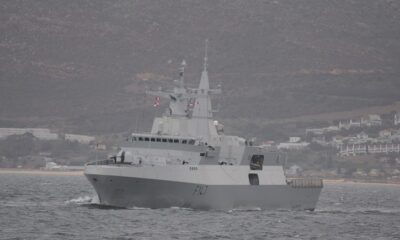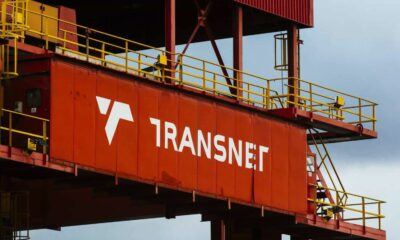Business
South Africa’s Direct Shipping Link to the US Faces Major Shake-Up

For nearly a decade, South African exporters have relied on two global shipping giants, Maersk and Mediterranean Shipping Company (MSC), to keep goods moving quickly and directly to the United States. But from 1 October 2025, that equation changes.
Maersk will end its direct South Africa–US shipments, replacing them with a transhipment model that sends cargo through Europe first. For exporters, that means goods will now be offloaded at a European hub, reloaded onto another vessel, and only then make the Atlantic crossing.
It is a shift that could add days, even weeks, to delivery times and push up costs at a time when many industries can least afford it.
The End of a Shipping Alliance
Until now, Maersk and MSC had been sharing container space on the AMEX service, a direct line from South Africa to the US East Coast that emerged from the now-defunct 2M Alliance. When that partnership ended in 2023, MSC stayed the course while Maersk began rethinking its strategy.
With Maersk’s October withdrawal, MSC becomes the only major operator offering a direct weekly service to the US. The company says it is ready to handle the extra load, adding four new vessels to bring its fleet on the route to eight ships.
These ships will sail from Durban, Gqeberha, and Cape Town directly to ports including New York, Baltimore, Norfolk, Charleston, and Freeport.
Concerns Over Capacity and Timing
While MSC’s expansion sounds promising, exporters and industry leaders are not entirely reassured.
Unathi Sonti, Chairperson of the Maritime Business Chamber, says time-sensitive sectors are most at risk. Without weekly Maersk sailings, certain industries, especially those working with perishables or operating on just-in-time schedules, could struggle to meet delivery commitments.
“There will now be issues with them not having the weekly shipping line routes directly to the US,” Sonti explained.
The new European detour for Maersk shipments will particularly affect goods leaving Western Cape ports, where the risk of delays and missed windows is greater.
Competition and Opportunity
Despite the disruption, Sonti sees potential for a silver lining: more competition. With MSC left as the sole major direct operator, the gap could attract new international carriers, but only if they see enough cargo demand to make the route profitable.
“The USA line is not closed,” Sonti stressed. “Now that will leave MSC in a position of being the only one. Even though they have committed to putting in additional resources to continue the line, we don’t know what that means in practical terms.”
He warns that no shipping company will commit a vessel to the route without the economics stacking up. In the meantime, exporters must adapt to longer lead times, less predictability, and the challenge of building flexibility into their supply chains.
The Bottom Line
From October, South Africa’s direct link to the US will hinge largely on MSC’s ability to absorb Maersk’s former customers. For businesses shipping time-critical goods, the change could mean adjusting operations, renegotiating contracts, and finding creative ways to navigate the extra transit time.
Whether this opens the door for more competition or simply consolidates the market remains to be seen. For now, exporters will be watching the water and the calendar more closely than ever.
Also read: DStv’s Piracy Battle: How MultiChoice is Fighting Back in 2025
Follow Joburg ETC on Facebook, Twitter, TikTok and Instagram
For more News in Johannesburg, visit joburgetc.com
Source: Business Tech
Featured Image: Fruitnet























